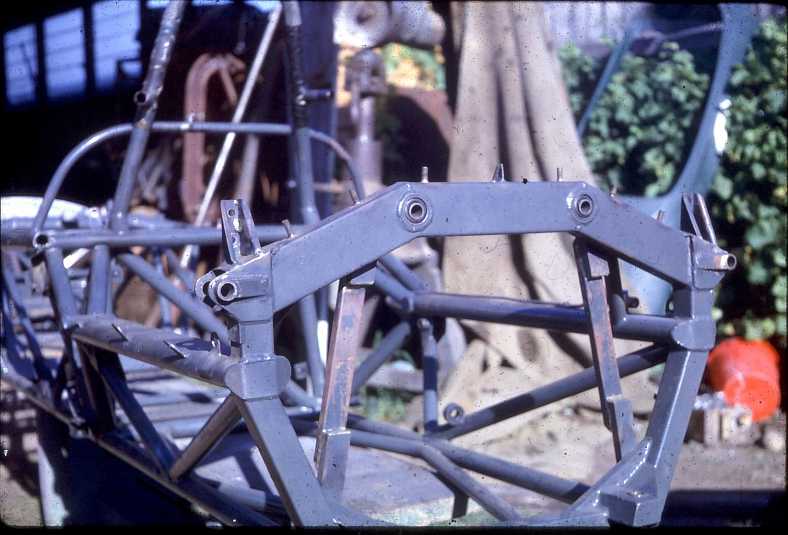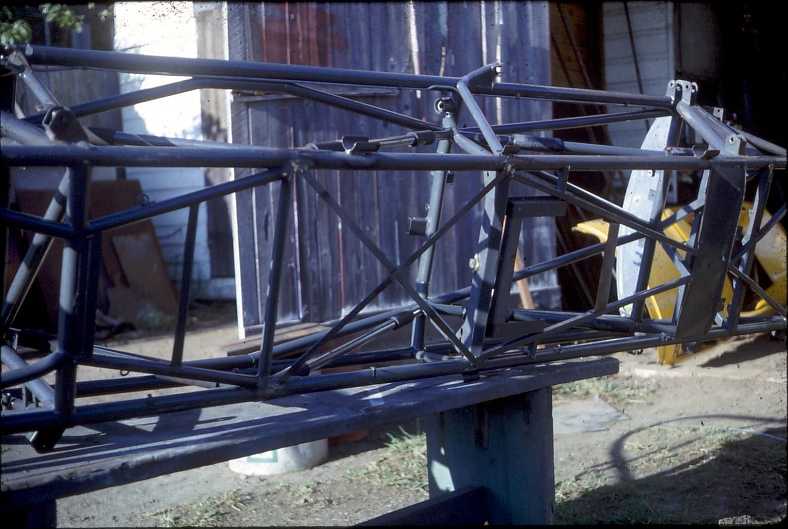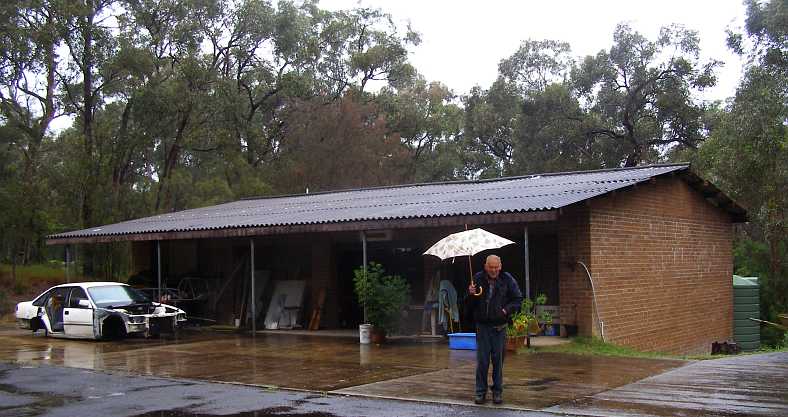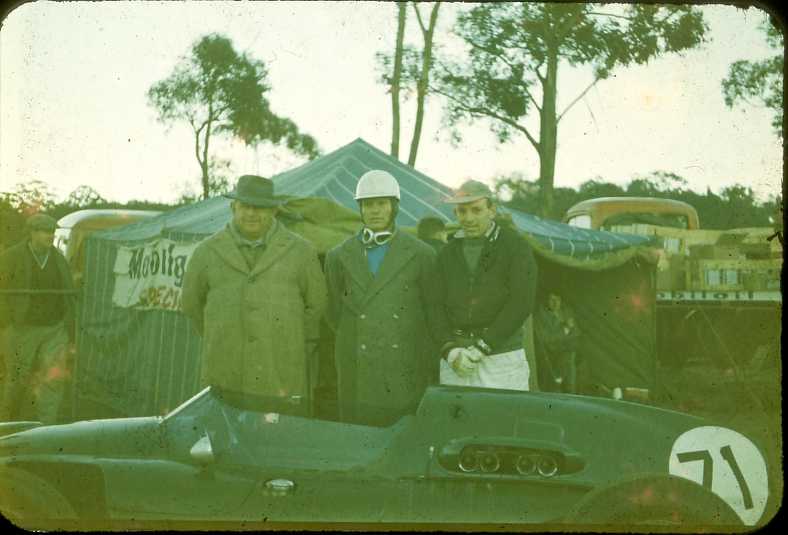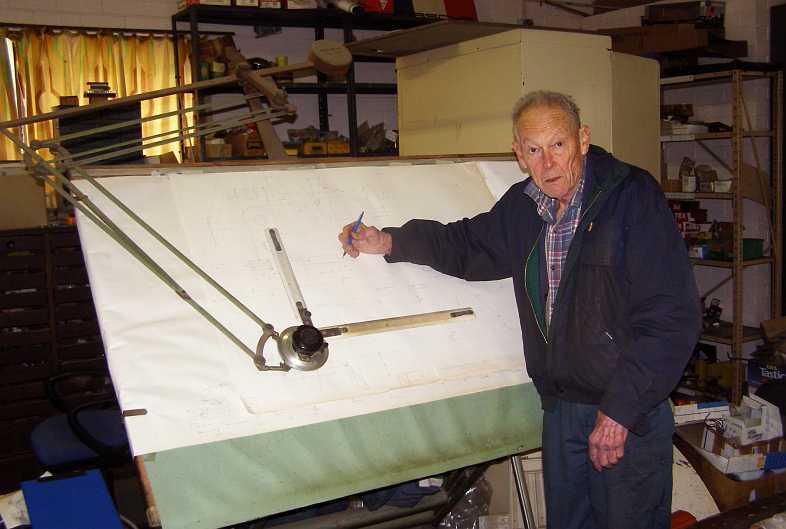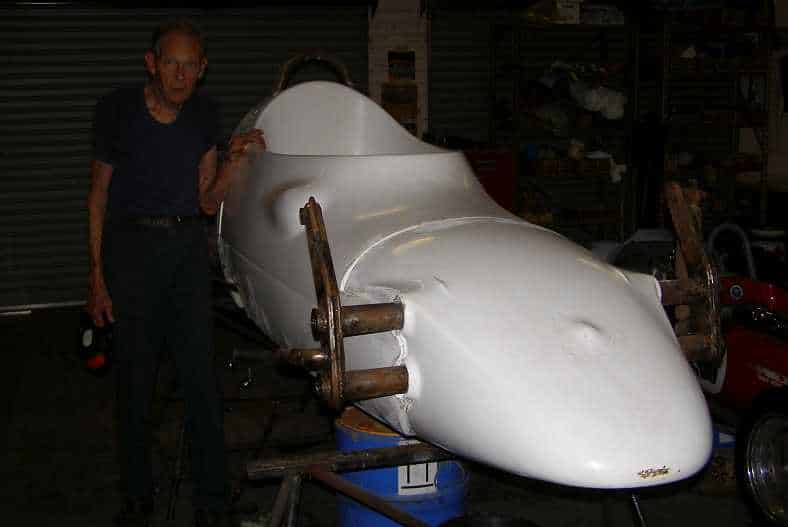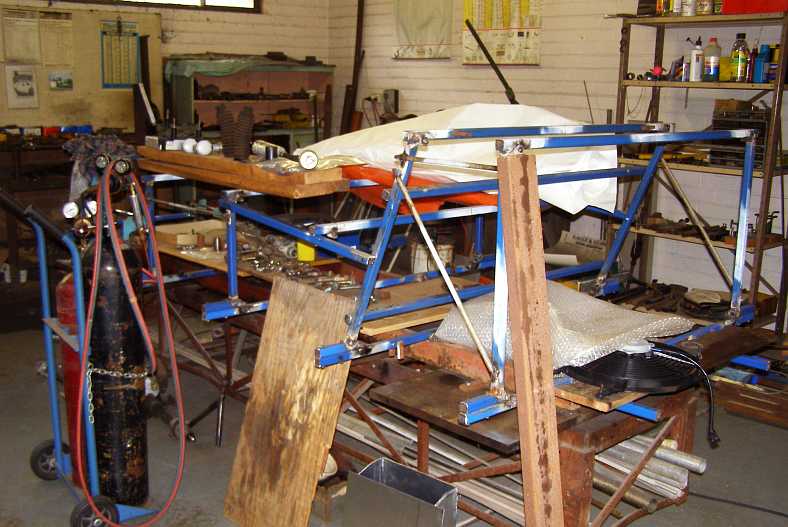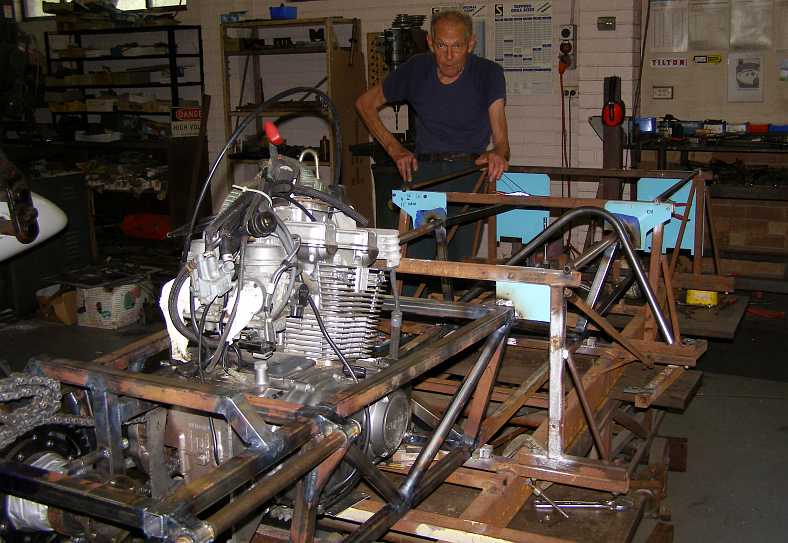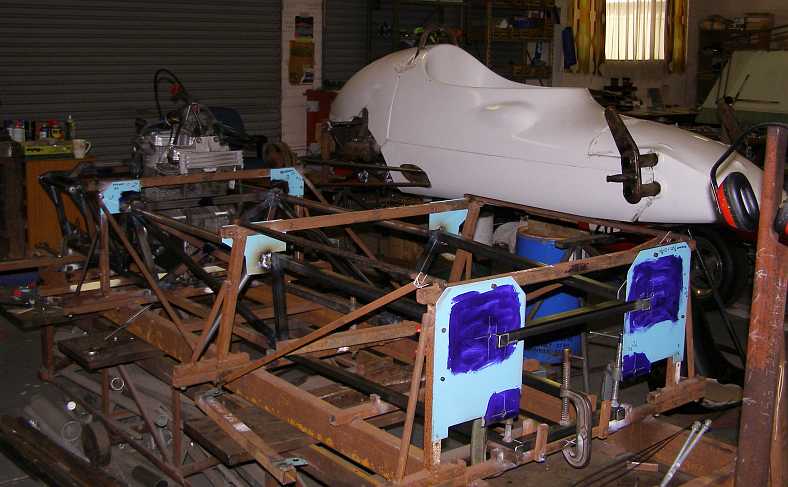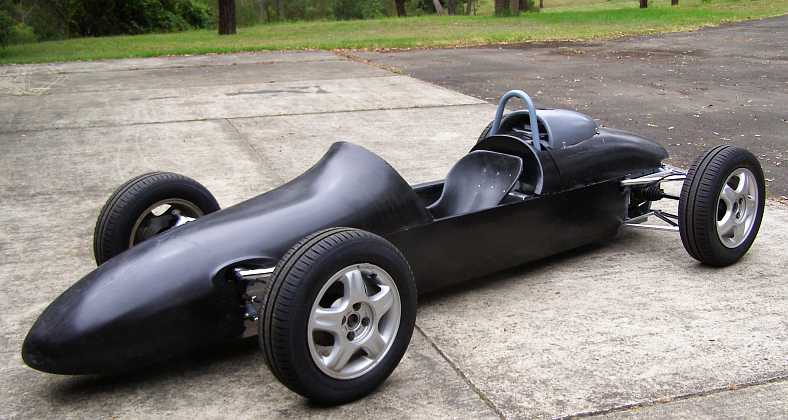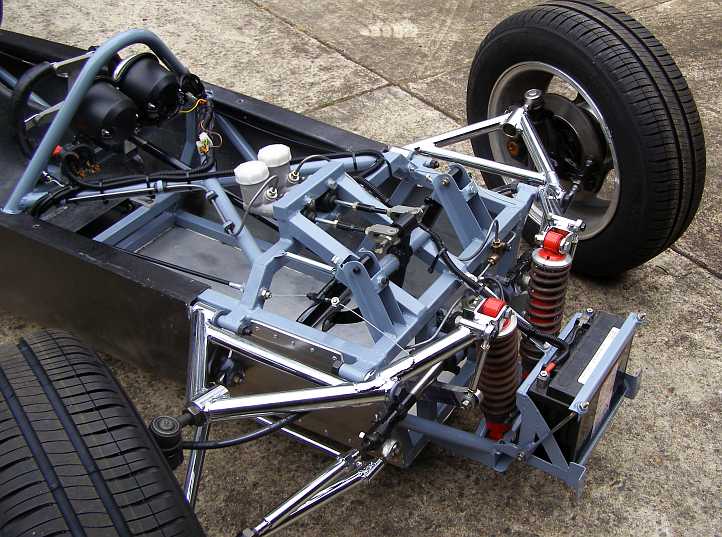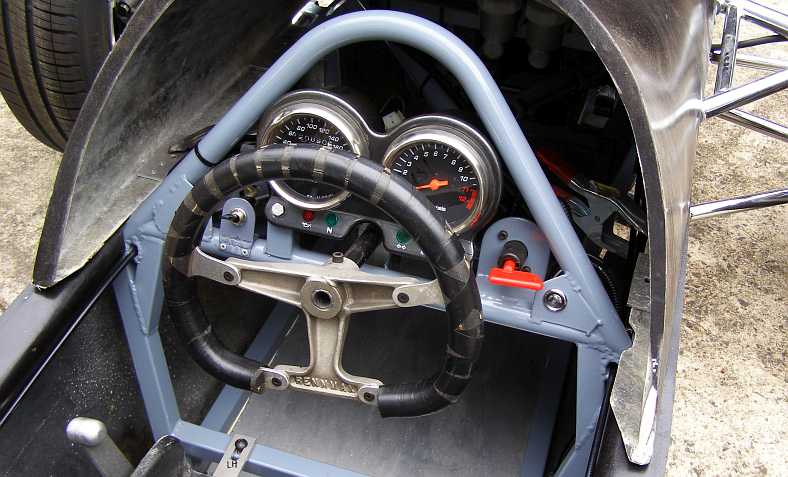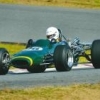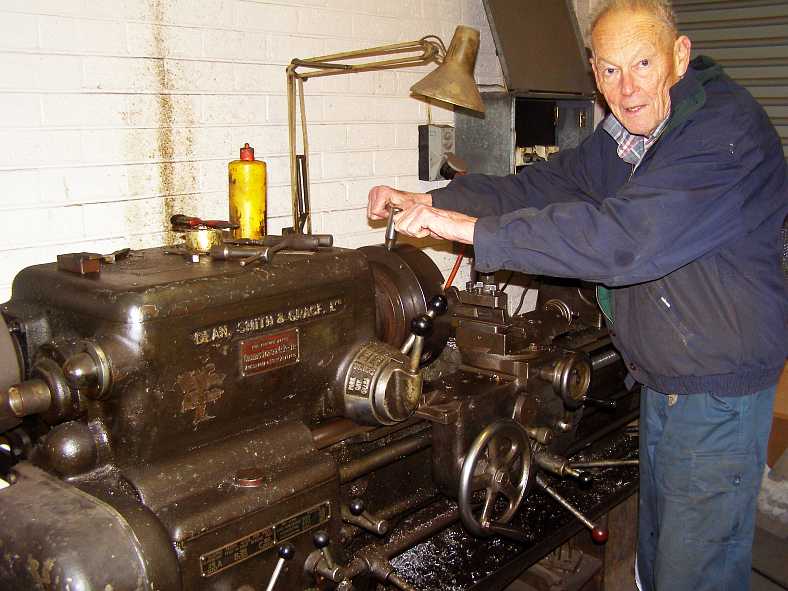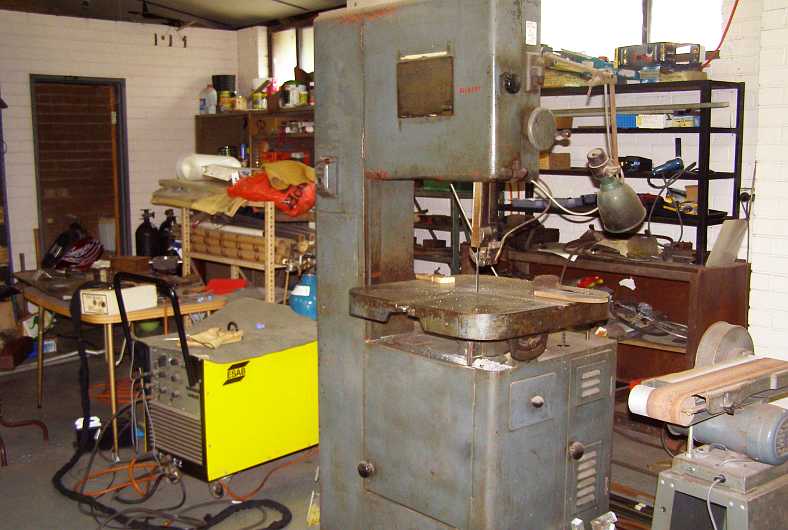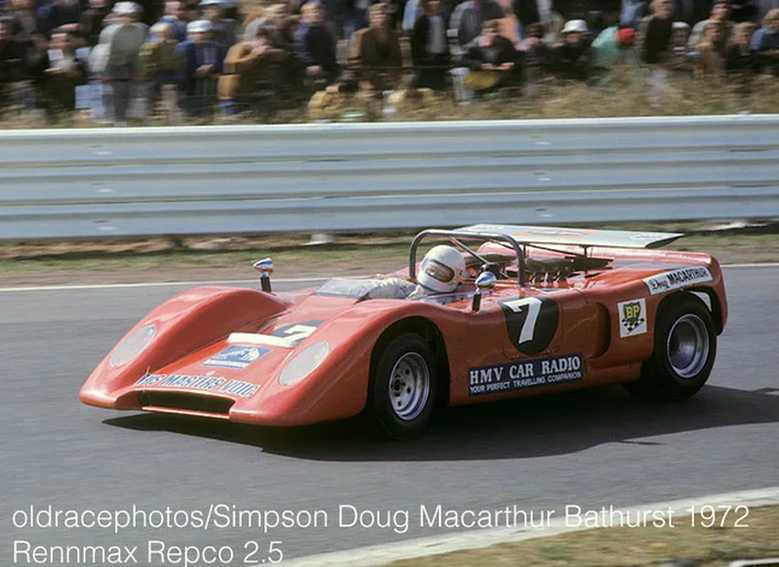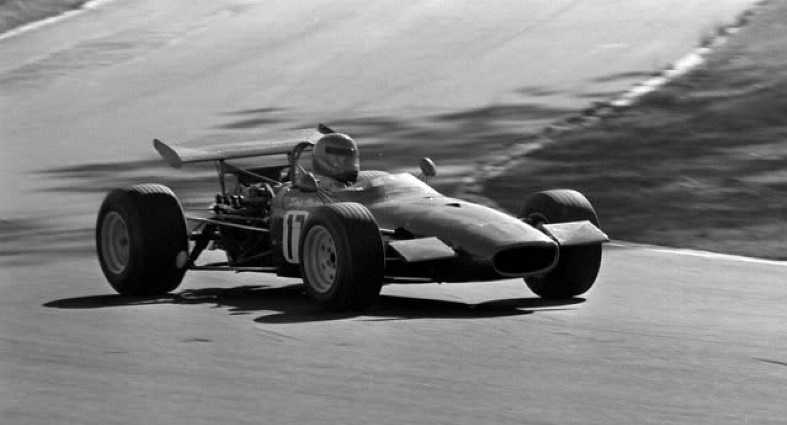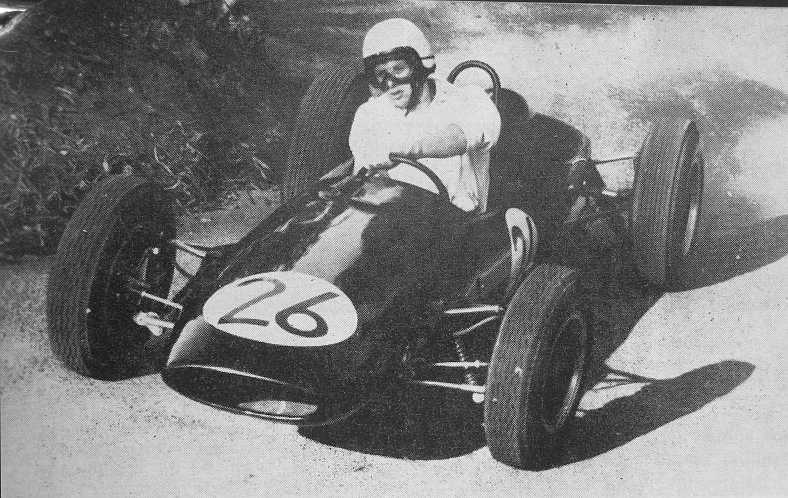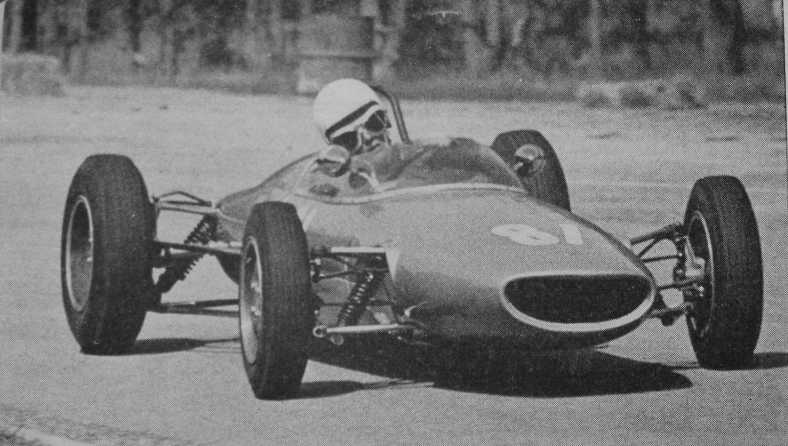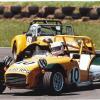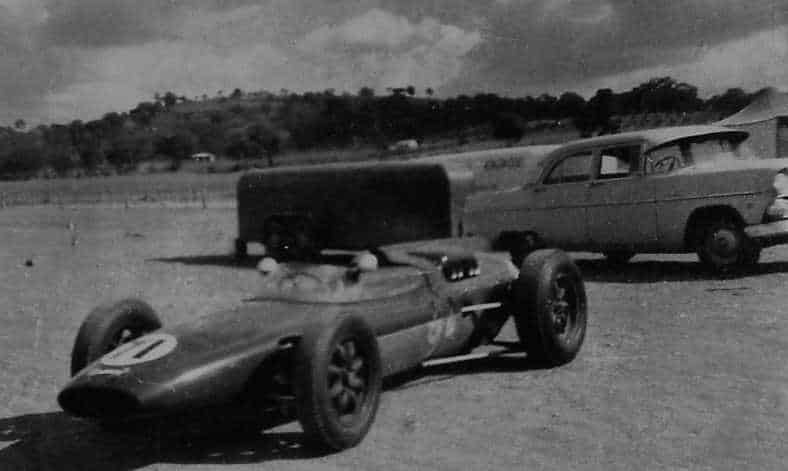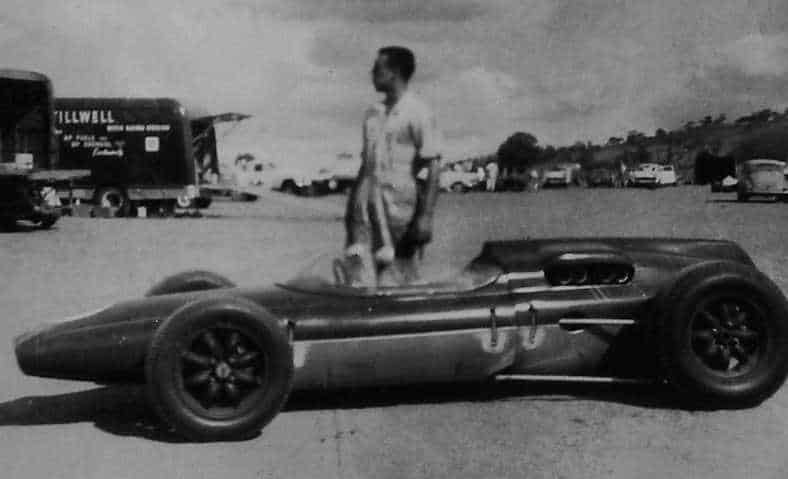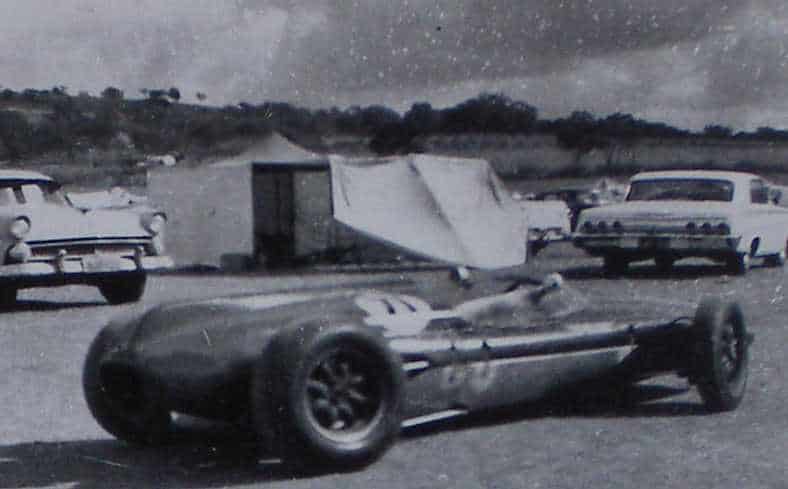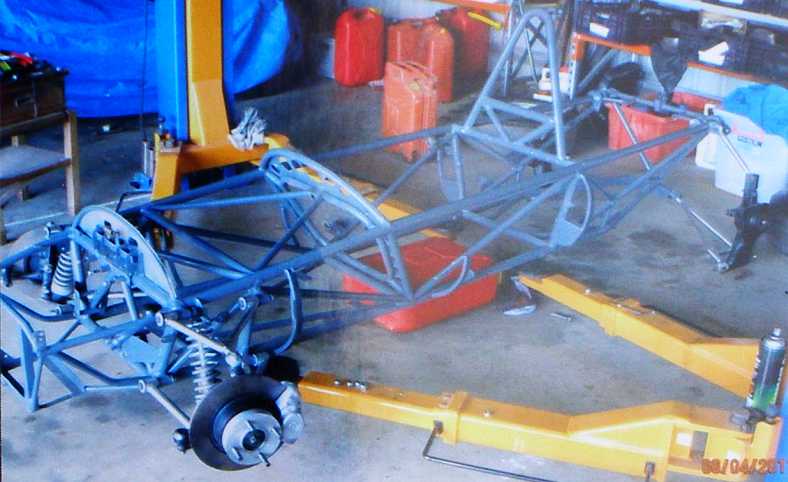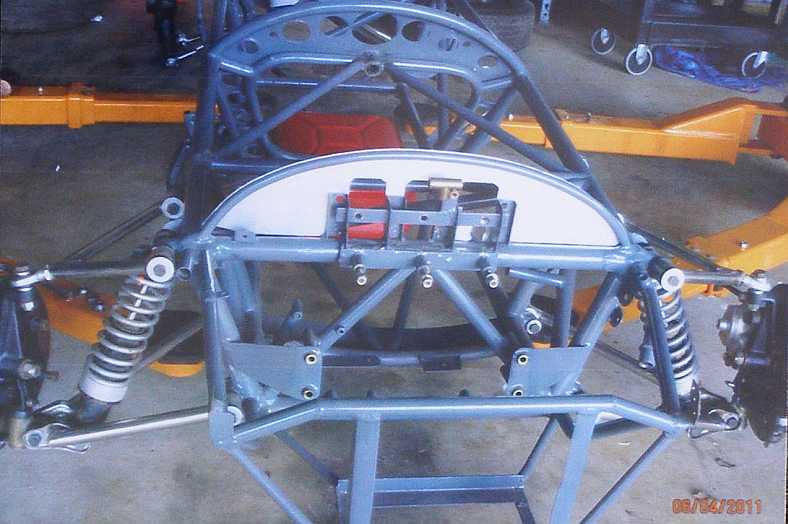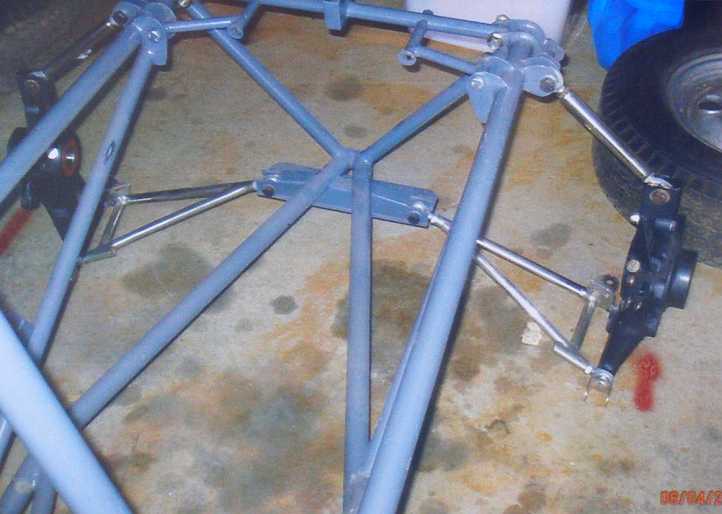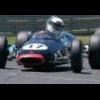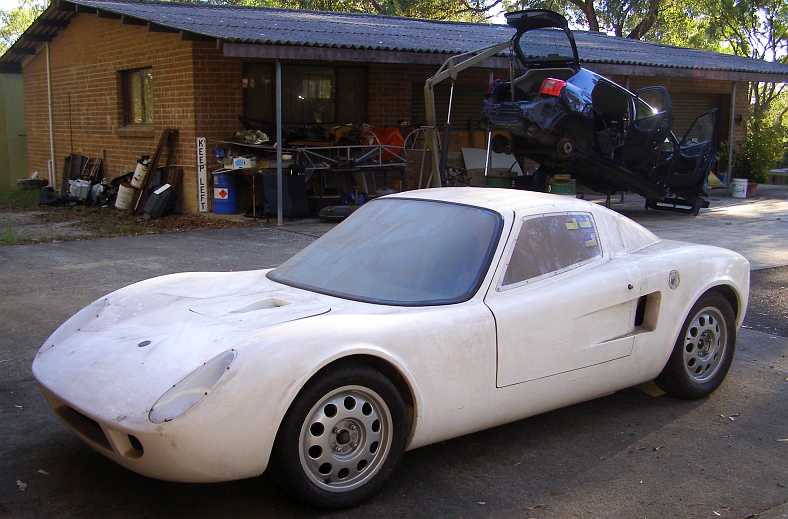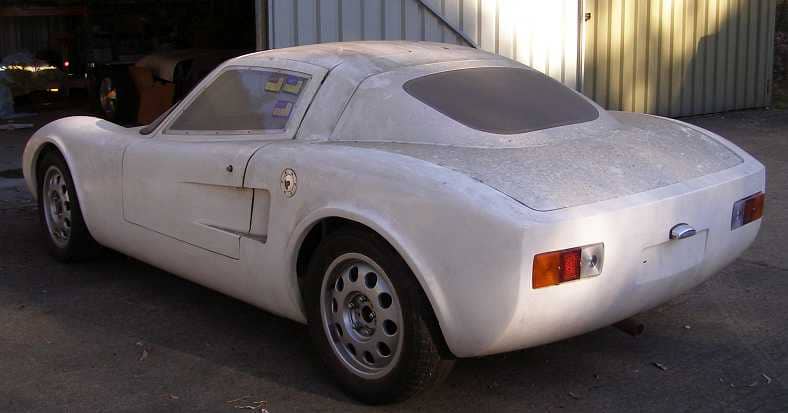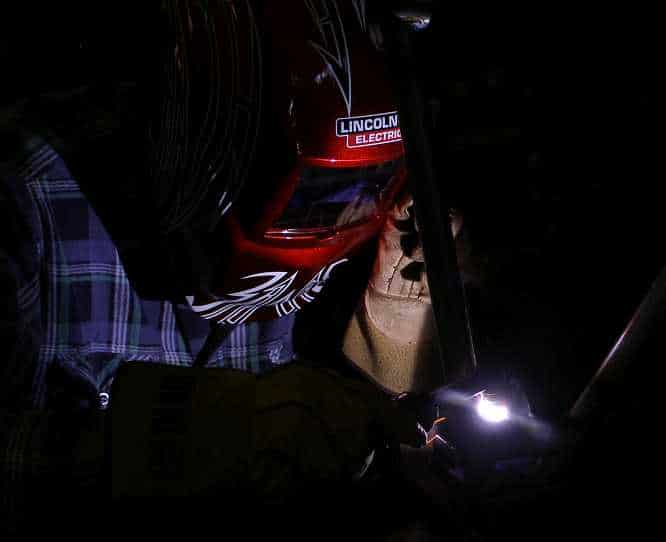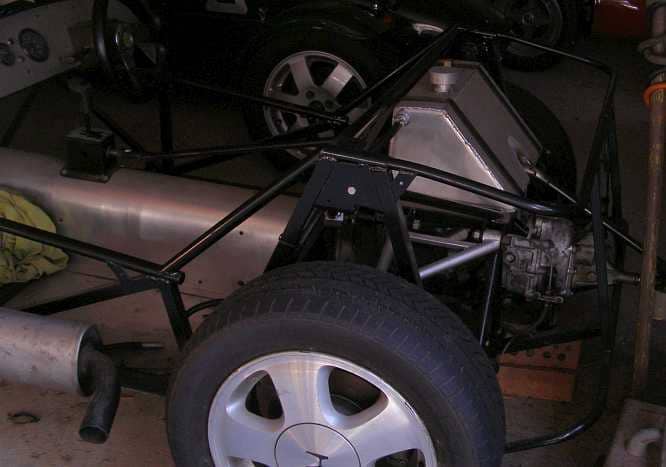GeneralRennmax Engineering was a name applied by Bob Britton to his racing car related business set up in 1961 in a shed in the back yard of his parents’ home in the Sydney suburb of Croydon.
The word Rennmax is derived from the German word “Renn” meaning speed, and the abbreviation “max” from maximum.
The plural of Rennmax is Rennmaxes.
Bob was a very modest man, and was not concerned with what purchasers called their new cars he delivered. So we have Mildren, Jane, MRC, Cee-Bee, and Rorstan in addition to Rennmaxes.
Although Rennmax cars are often referred to by model descriptions such as BN2, BN3 etc, Bob claims these are given by other people and not him. In practice he did not even stamp chassis numbers on his cars.
With Brabhams, the BT? model numbers referred to Brabham and Tauranac. With Rennmaxes it is assumed the “B” related to Britton, but I do not know what the “N” related to.
Rennmax BN3The BN3 was perhaps the most significant of Rennmaxes. Numbers built are not known, but I have seen figures of 7 to 11.
The genesis of the model started with the 1968 Tasman Series.
The initiator of the model was the New Zealand team Rorstan Motor Racing. This was a partnership of Ian Rorison and Feo Stanton. They team entered cars in the late 60’s Tasman Series, usually old Brabhams powered by
Climax 2.5L engines. These engines were scarce but the Rorstan team had 5, although none were new, and were in various stages of life.
For the 1968 Tasman Series they entered Aussie Paul Bolton in a Brabham BT11 Climax 2.5L.
The records show Rorstan did not achieve very much, mainly because of running old and ill prepared cars with abysmal reliability.
For the International Formula 2 class, the FIA introduced new rules for 1967. Cosworth developed the 1.6 litre 4 cylinder FVA engine (four valve assembly) for this formula and Brabham released a new model the BT 23.
Brabham and Hulme drove chassis 1 and 2 for the Brabham works team, and Roy Winkelmann Racing (a semi works team) entered chassis 4 and 5 for Alan Rees and Jochen Rindt respectively.
Rindt had a phenomenal record in his car in 1967. Out of 15 races he won 9 and finished second four times. In the FIA European F2 Championship he won 6 out of 10 races, but was not awarded the championship as he was
a seeded driver. That honour went to Jackie Ickx. This Rindt association is very relevant to the recent value of the car (see below).
For 1968 Hulme had signed with the McLaren Team and so was forced to find his own car for the 1968 Tasman Series. He thought that Rindt’s BT23-5 was much better than his BT23-2, so he made arrangements to bring that.
Never mind greater ability.
Hulme crashed BT23-5 in the first race of 1968 series, the NZ GP, on lap 56 of the 58 lap race. He collided with local Laurence Brownlie, with both cars turning over and “disintegrating”.
Hulme was forced to arrange to bring out BT23-2 from Europe for five of the remaining races. He didn’t manage any wins, his best being third at Wigram.
After the Tasman series BT23-2 went back to Europe and is believed to be still racing.
After Hulme’s crash in the 1968 NZ GP, Rorstan acquired BT23-5 (less engine) and sent the chassis to Bob Brittan in Sydney to fix. Rorstan retained the suspension. Bob repaired the chassis and saw the ideal base
for producing future cars, so made a jig after straightening the Brabham, then sent back to NZ a brand new BT23 style car containing all the usable BT23-5 bits, and with space for fitting a Climax 2.5L.
This jig was to be used for the creation of up to 11 cars, plus numerous repairs. This was the start of the Rennmax BN3 cars. It is interesting that the cars were invoiced as “1 only Brabham style racing car
rolling chassis”.
The old but valuable chassis (BT23-5) simply went to the roof of Bob’s back yard shed.
Rorstan called this new car the Rorstan 1 Climax, chassis # RMR1. It had distinctive very upswept and long exhaust pipes for a Climax engine car. Stanton never pretended the car was a Brabham.
For the 1969 and 1970 Tasman Series, Rorstan used this car with a couple of drivers, but as usual were not very successful.
For 1971 Rorstan finally realised the Climax 2.5 was outdated so a very rare Porsche 2 litre flat 8 four cam engine was installed. Chassis number was changed to M1A from Mk 1. The engine has been described as
variously a 907, 908 and a 771. I will leave that to Porsche experts.
The change to the Porsche engine had even worse results in 1971 Tasman. Faloon was entered for Leven but did not arrive. For Pukekohe and Wigram he did not start.
For 1972, following the breakup of the Rorstan partnership, the car was called the Stanton 1 Porsche.
The Rorstan Porsche was unfortunately destroyed on lap 52 of the 58 lap 1972 NZ GP in a major accident involving their driver Brian Faloon, Graeme Lawrence and John McCormack. The Stanton was launched headlong
into an earth safety barrier, taking to the air before crashing down onto its wheels again. Lawrence’s Lola was cart wheeled down the track, totally disintegrating on the way. The Stanton looked relatively intact
but the head injuries Bryan Faloon (aged29) sustained in the impact proved fatal.
The whole Stanton car with its rare Porsche engine and gearbox still attached, found its way to Melbourne for then Australian Porsche Distributor Alan Hamilton, who had acquired the car for the engine and gearbox
for a restoration. He sold the rest to Melbourne’s Denis Lupton to salvage the genuine Brabham parts (which he on sold to Goodare see below). Where the Rorstan chassis went next is unknown, bur presumed to tip.
Meanwhile back at the top of Bob Britton’s shed:
Some years later Bob was commissioned by a client to rebuild the original BT23-5 frame as a Formula Ford, using Rennmax uprights etc, but the client never fronted up with the cash and so never took delivery.
The car was then sold to Graham Hepburn of Talbingo N.S.W. and then ended up with Denis Lupton of Melbourne circa 1981.So now Lupton had the original Brabham chassis, and the original Brabham bits from the
Rorstan car. The complete collection of BT23-5 remains, including the rolling chassis, was then sold to George Goodare of Sydney in December 1983. After a major rebuild the car was campaigned by Goodare for many
years complete with correct FVA/FT200 etc, and having recast new uprights etc. The car was last raced by Goodare in about 1990.
It was sold in 2008 to Jean-Marie Muller of France, and damaged in an accident and fire at Reims, France, in 2010. Fully restored and next seen September 2013 on display at Heeresgeschichtlicen Museum in
Zeltweg Austria, see following, looks to be in very good condition.
http://www.salzburg.....elpiste-74531/BT 23 -5 was put up for auction on 26 June 2015. See following for details.
http://www.classican....f2-car-offeredThey seem to be capitalising very much on it being used by Jochen Rindt originally.
There were very steep sale estimates of 360K - 500K Euros.
I like the description that “it’s not in great condition”. It looks pretty good to me.
In the end it ONLY made 235K Euro, about 350K AUD. I reckon that is still pretty good.
Edited by TerryS, 22 January 2017 - 21:56.
